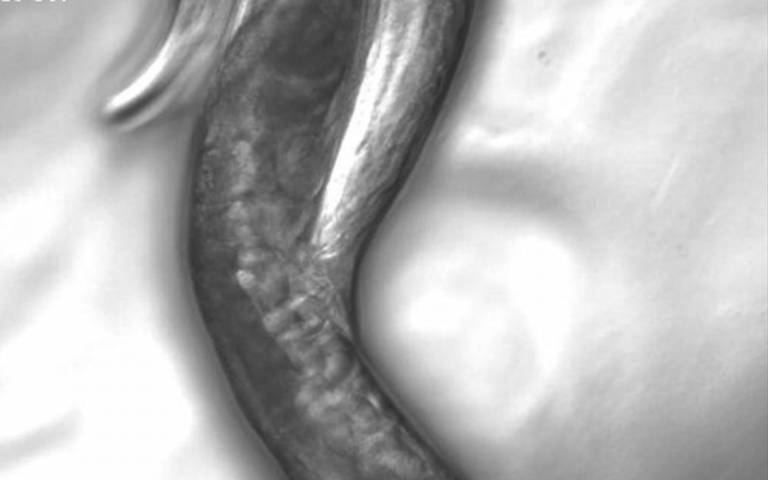Cells transform themselves in male worms to improve mating
3 November 2020
A cell in worms that transforms itself into a completely different type of cell when males mature, to play a key role in mating behaviour, has been recently discovered by a team led by UCL researchers.

The researchers say their findings, published in eLife, may lead to new clinical applications if scientists can reproduce the mechanism to reprogram cells to adopt new functions.
Co-lead author Dr Richard Poole (UCL Cell & Developmental Biology) said: “In contrast to behaviour, which is characteristically flexible and variable, development needs to be consistent, and once a cell has its own identity with a particular function, this is considered to be fixed throughout the life of the animal.
“But here, we describe in detail the case of a specialised cell that switches to a new cell type with a completely unrelated function later in the animal’s life.”
This is the second time the research team has identified a new neuron in the C. elegans roundworm. In 2015, they identified a pair of neurons in male worms that allow them to remember and seek sex, even at the expense of food.*
Co-lead author Dr Arantza Barrios (UCL Cell & Developmental Biology) said: “The C. elegans worm has been studied extensively as a model organism, so we were surprised to find once again a type of neuron that had not yet been identified.”
The researchers were investigating a glial cell, a non-neuronal cell present in animal nervous systems. This particular glial cell is a key component of an opening in the worm’s skin that allows it to sense the external world.
However, the researchers found that, exclusively in males, the cell develops a new identity as the animal nears sexual maturity. The glial cell in males becomes a previously unidentified sensory neuron, in an unusual event called transdifferentiation, or a direct cell identity switch. In its capacity as a neuron, the cell enables the male worms to improve their mating technique.
For the study, the researchers used molecular tools to measure or silence neuronal activity and micro-lasers to remove the neurons in live, active animals. They found that the cell senses the worm’s body posture and ensures continuous backward movement along its mate’s body during particular steps of the mating sequence. One such step is a newly-identified readjustment movement, when the worm is having trouble inserting its spicules (the equivalent of the worm’s penis), which the researchers dubbed the Molina Manoeuvre (as it was first noticed by one of the study’s primary authors, Dr Laura Molina-García from UCL Cell & Developmental Biology).
Only a few examples of direct cell type switches such as these have been identified in nature. While none have been found in humans, or in any other vertebrates, the researchers say that such switches might be more common throughout the animal kingdom than we realise, and it is likely that some human cells may undergo a similar switch under certain conditions.
Dr Poole said: “Our findings support the idea that cell identity is more flexible than previously thought. Identifying the mechanisms that regulate this naturally-occurring switch in cell type through future studies will help understand processes such as neural regeneration and injury repair.
“The findings can also be applied to develop better, more efficient methods for reprogramming cells in the lab, which is a widely used strategy for cell replacement therapies for conditions such as spinal cord injury and neurodegenerative conditions including Parkinson’s or Huntington’s disease.”
Dr Barrios added: “A deeper understanding of how animal movements are guided by self-sensory feedback could also be useful to robotics, to improve the execution of behavioural sequences.”
The study was conducted by researchers at UCL and the Albert Einstein College of Medicine in New York, and was supported by Wellcome, the Royal Society, European Commission, Leverhulme Trust, National Institutes of Health and the Mathers Foundation.
Links
- Research paper in eLife
- Dr Richard Poole’s academic profile
- Dr Arantza Barrios’ academic profile
- UCL Cell & Developmental Biology
- * UCL News, 2015: Extra brain cells makes males remember sex
- Media coverage
Image
- Roundworms mating. Credit: Molina-García, Lloret-Fernández et al.
Media contact
Chris Lane
Tel: +44 (0)20 7679 9222
Email: chris.lane [at] ucl.ac.uk
 Close
Close

